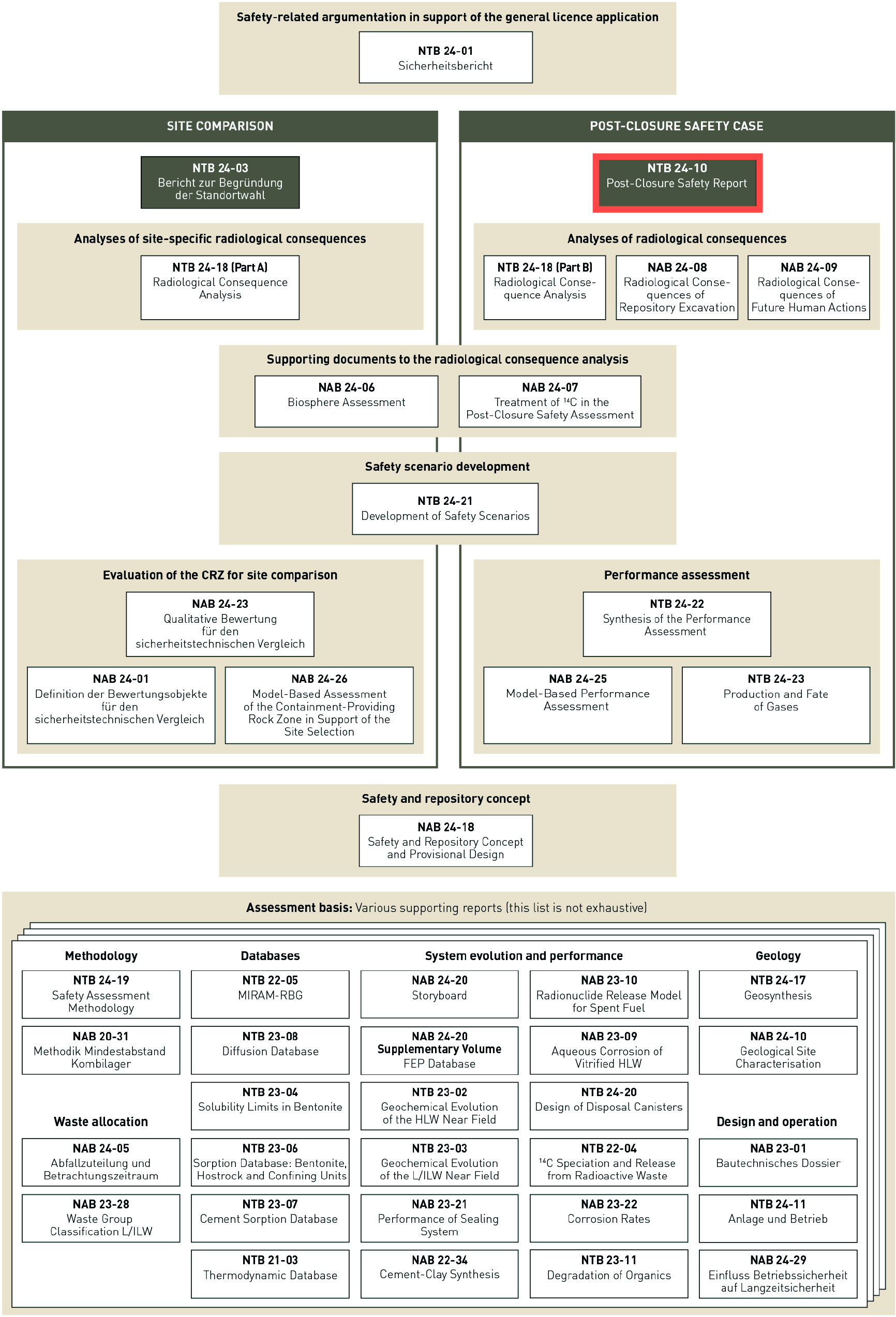In Switzerland, legal regulations (the Nuclear Energy Act KEG 2003 and the Nuclear Energy Ordinance KEV 2004) and guidelines are in place for the management of radioactive waste. The Nuclear Energy Ordinance (KEV) classifies Switzerland's radioactive waste into low- and intermediate-level waste (L/ILW), alpha-toxic waste1 (ATW) and high-level waste (HLW), the latter comprising spent fuel (SF) and vitrified HLW from reprocessing (RP-HLW). Currently, this waste is stored safely in interim storage facilities. The Nuclear Energy Act (KEG 2003, Articles 30 and 31 requires the disposal of all types of radioactive waste in deep geological repositories. The feasibility of this disposal solution has been demonstrated for L/ILW in Nagra (1985) and for long-lived intermediate-level waste and HLW in Nagra (2002) .
The Sectoral Plan for Deep Geological Repositories (SGT) regulates the search for suitable sites for deep geological repositories in Switzerland. This site selection process is conducted in three stages (BFE 2008). Stages 1 and 2, which had the goals of identifying six and then of proposing at least two potential siting regions per repository type, have already been completed and Nagra is currently in Stage 3 (SGT-E3). Clarifications on the safety-related specifications for this stage are provided in ENSI 33/649 (ENSI 2018), while ENSI Guideline G03 and the corresponding explanatory report (ENSI 2023, ENSI 2020) specify the protection objective, protection criteria and design principles for deep geological repositories.
In SGT-E3, three siting regions located in Northern Switzerland have been considered – Jura Ost (JO), Nördlich Lägern (NL) and Zürich Nordost (ZNO) – with the objective of selecting one siting region for an HLW repository and one for an L/ILW repository, or alternatively one for a repository for both HLW and L/ILW.
Following a comparison of the siting regions, Nagra concluded that NL is the most suitable and most flexible siting region. Therefore, it is applying for a general licence for a repository for both HLW and L/ILW, with surface facilities at the Haberstal site (municipality of Stadel, ZH).
The justification for this selection and the safety demonstration for a repository at the site are submitted as part of the general licence application (RBG2). The reports relating to post-closure safety, shown in Fig. 1‑1, are structured as follows:
-
The overall safety-related argumentation, including post-closure and operational safety, is summarised in an overarching safety report (“Sicherheitsbericht”) NTB 24-01 (Nagra 2025b) shown at the top of Fig. 1‑1.
-
The upper left side of Fig. 1‑1 shows the reports supporting Nagra’s site comparison. The available options are compared with respect to safety and technical feasibility and the results are synthesised in NTB 24-03 (Nagra 2025a) (“Bericht zur Begründung der Standortwahl”).
-
The upper right side of Fig. 1‑1 shows the reports documenting the post-closure safety case for a geological repository for both HLW and L/ILW at the selected site, including its synthesis in the post-closure safety report NTB 24-10, which is the present report and highlighted with a red box.
-
The lower middle part of Fig. 1‑1 shows a report that presents the current safety and repository concept, including the provisional design.
-
The bottom of Fig. 1‑1 shows a selection of the many reports that document the assessment basis, which encompasses the methodologies, assessment tools, databases and all other evidence and knowledge developed or acquired in support of the safety assessment.

Fig. 1‑1:Structure of reports covering post-closure safety aspects of the site comparison and the post-closure safety case
The present report is highlighted with a red box.
According to (Nagra 2024a), ATW can coexist with L/ILW within the same emplacement caverns. As a result, for the sake of simplicity in the context of deep geological disposal, the term L/ILW encompasses ATW without explicit mention. ↩
From the German Rahmenbewilligungsgesuch. ↩

